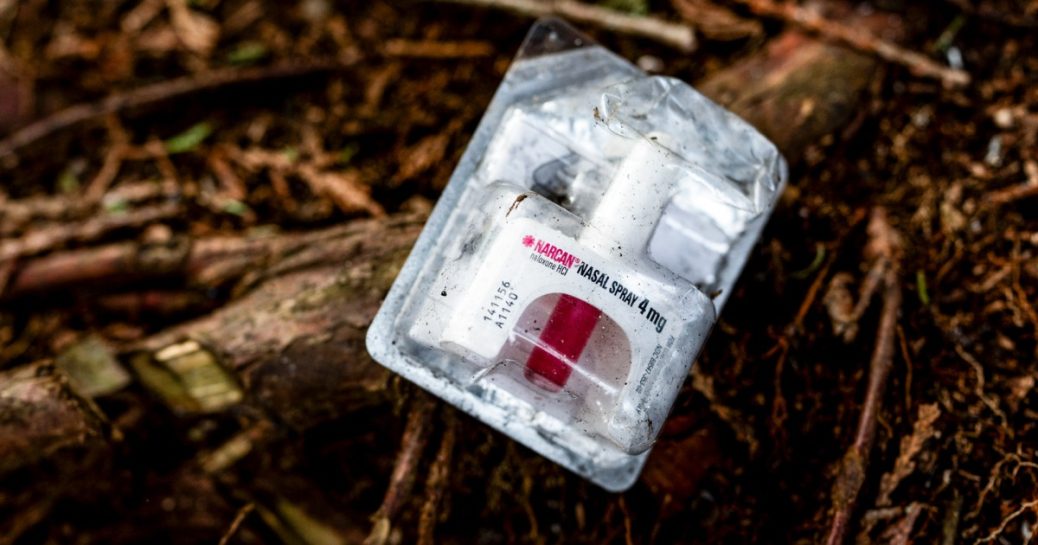
Drug overdose deaths decreased slightly last year, falling for the first time since 2018, early data from the Centers for Disease Control and Prevention published Wednesday shows. Still, overdose deaths remain extremely high.
More than 107,000 people died of a drug overdose in 2023, down from roughly 111,000 in 2022, the data showed.
“More than 100,000 people died of overdoses in 2023. If you take a historical perspective, this is four times what it was 20 years ago,” said Magdalena Cerdá, director of the Center for Opioid Epidemiology and Policy at the NYU Grossman School of Medicine in New York City.
Overdose deaths in the U.S. surpassed 100,000 for the first time in 2021.
Synthetic opioids, mainly fentanyl, were involved in nearly 70% of the deaths — about 75,000 people — last year. That was a slight drop from 2022.
Fentanyl first made its way into the illicit drug supply about 12 years ago, when dealers started mixing it with heroin as a way to stretch their supply. But fentanyl is up to 50 times stronger than heroin, and while users initially tried to avoid it, many now seek it out.
The drug is also increasingly making its way into counterfeit pills. In recent years, a growing number of fentanyl overdoses have occurred in people who didn’t know they were taking the synthetic opioid, including teenagers who took counterfeit pills made to look like Xanax.
“It’s so prevalent in the drug stream that people are often using fentanyl when they don’t intend to,” Cerdá said. Harm reduction tools made available to opioid users — such as naloxone, which can arrest an overdose, and fentanyl test strips — should also be widely used among people who use other illicit drugs that often contain the potent synthetic opioid, which have driven overdose deaths across the country for decades, she added.
Overdose deaths involving stimulants, however, ticked up in 2023, something experts say defines the “fourth wave” of the nation’s overdose epidemic. Deaths involving stimulants — primarily cocaine and methamphetamine — increased by about 2%, accounting for about 66,000 overdose deaths.
It’s common for stimulant overdose deaths to also include fentanyl, said Marcella Sorg, director of the Rural Drug and Alcohol Research Program at the University of Maine Margaret Chase Smith Policy Center.
“In Maine, about 82% of deaths where methamphetamine or cocaine is on the death certificate as a cause, those cases also name fentanyl, so these are fentanyl deaths as well,” she said.
Wide gaps between states
Four states — Indiana, Kansas, Nebraska and Maine — all saw declines in overdose deaths of at least 15%.
Dr. Kenneth Zoucha, director of addiction medicine for the department of psychiatry at the University of Nebraska Medical Center, said Nebraska is making many of the same harm reduction efforts that other states are, but what might be different is the way the state is communicating those efforts.
“There’s been a lot of billboards, newspaper ads and TV stuff surrounding naloxone — where it’s available, where people can get naloxone for free,” Zoucha said, referring to the opioid overdose reversal medication, which is also sold under the brand name Narcan.
While the decreases are welcome news, the overall numbers may be masking racial disparities.
“It’s important to determine if these numbers have gone down equally among all ethnic groups,” said Dr. Steven Woolf, director emeritus of the Center on Society and Health at Virginia Commonwealth University. “Because there are more people in the white population, the positive trend in the white population may be offsetting a negative trend that is happening in the Black and Native population.”
When overdose deaths rose 30% from 2019 to 2020, Black Americans and American Indians and Alaska Natives saw the biggest increases.
Some states saw sharp increases in overdose deaths overall. Alaska, Oregon and Washington all had increases of at least 27% in 2023 compared to 2022. Eastern and Midwestern states in general saw a decline, while Western states, especially those in the Northwest, California and Nevada, all saw increases, said Farida Ahmad, health scientist and mortality surveillance lead at the CDC’s National Center for Health Statistics.
“We have seen a shift in the drug supply,” Cerdá said. “First we saw fentanyl on the East Coast and then we saw it spread to the West Coast and we saw that overdoses follow that pattern.”
Woolf said that addressing proximal causes of overdose deaths — immediately treating an overdose with Narcan and providing counseling to people who have addiction — falls short of addressing the root causes of the overdose crisis.
“We need to think upstream about the conditions that are happening in our society that are causing people to turn to drugs. That might be physical pain, but sometimes also psychic pain caused by the economical stressors and social mobility issues that families face,” he said. “Those could potentially have a bigger impact on preventing overdose deaths than some of the other policies we do.”
Ahmad said that the 2023 early data is optimistic, but that the U.S. is not out of the woods yet. She noted the decrease the U.S. saw in 2018 preceded a sharp increase in the four years that followed.
“Hopefully this is the first sign we are seeing a decline,” she said. “We have been seeing the numbers slow down since 2022. Hopefully the trend continues, but it’s too early to say that it is a complete reversal.”










Recent Comments